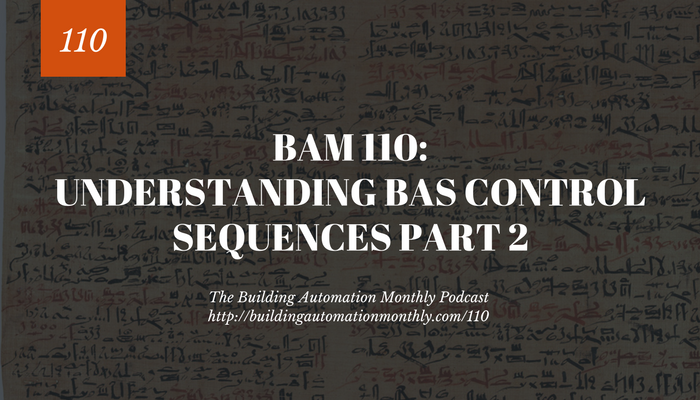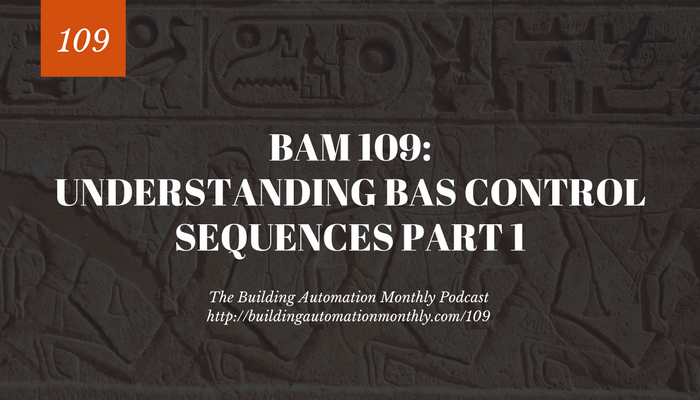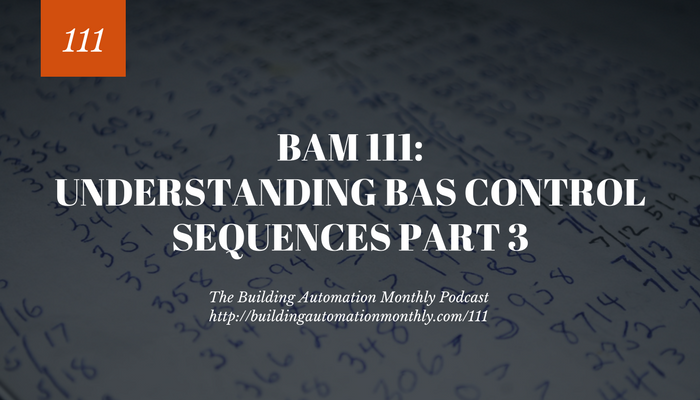Do you work with VAV boxes?
Have you ever wondered why you can't maintain a space's temperature setpoint even when all the "controls" seem to be working?
If so this episode is for you. In episode 110 of the Building Automation Monthly podcast, we discuss how to effectively control a space. This episode takes a deep dive into the topic of space control and covers:
- How air changes work
- Strategies for preventing supply fan failures on startup
- The importance of understanding standards
- How ventilation works and the importance of min and max flow settings
- And much, MUCH more
Click here to download or listen to this episode now.
Exploring airside sequences
Here’s are the topics I cover in this episode:
- Why do we use control sequences (0:42)
- The four main parts of a control sequence (1:07)
- What is unique about a VAV (3:30)
- How air volume affects the temperature of a space (5:05)
- The effect of mixed air on space comfort (6:30)
- Slow acting loops and their relationship with air changes (7:45)
- Do the dewpoint, why we cool air to 55 degrees (9:15)
- Why a VAV's minimum airflow does not equal minimum outdoor air (11:45)
- Going through a VAV sequence step-by-step (15:30)
- How you cool with a VAV box (16:20)
- How cooling only and reheat VAV units work (17:30)
- The effect of closing a VAV box damper to 0% (18:00)
- The secret method for preventing damper PID windup (21:04)
- How deadband controls your PID enable modes (22:30)
- The secret method for preventing damper PID windup (21:04)
- How to control heating loops in VAV boxes (24:20)
- Why you need to have a higher minimum CFM in heating mode (26:10)
- You've got the power... The power of understanding ASHRAE standards (28:50)
Resources mentioned in this episode
- Master control sequences and grow your BAS career with my new online course
- VAV Reheat Specification
https://youtu.be/AaHrm8S16nM





